The Vegetable Garden, Our Backyard Adventure
After living in our house for the first year, I (Will) decided I wanted to try my hand at a vegetable garden. I wasn’t looking for anything fancy, just a dirt plot to grow our own food and thus started our backyard vegetable garden adventure.
Year One
Our first attempt was a vegetable garden plot about 12ft X 15ft. It’s just the two of us and we figured it would be a good start. We invested about $250 in metal wire fencing to keep the deer and other creatures out, heavy duty staples for the wire fence, garden soil (by the bag, oh how far we have come) and plants. I foraged the woods for small saplings for posts and used our neighbors rototiller to work up the soil. Boom we had a garden and almost nothing grew. LOL.
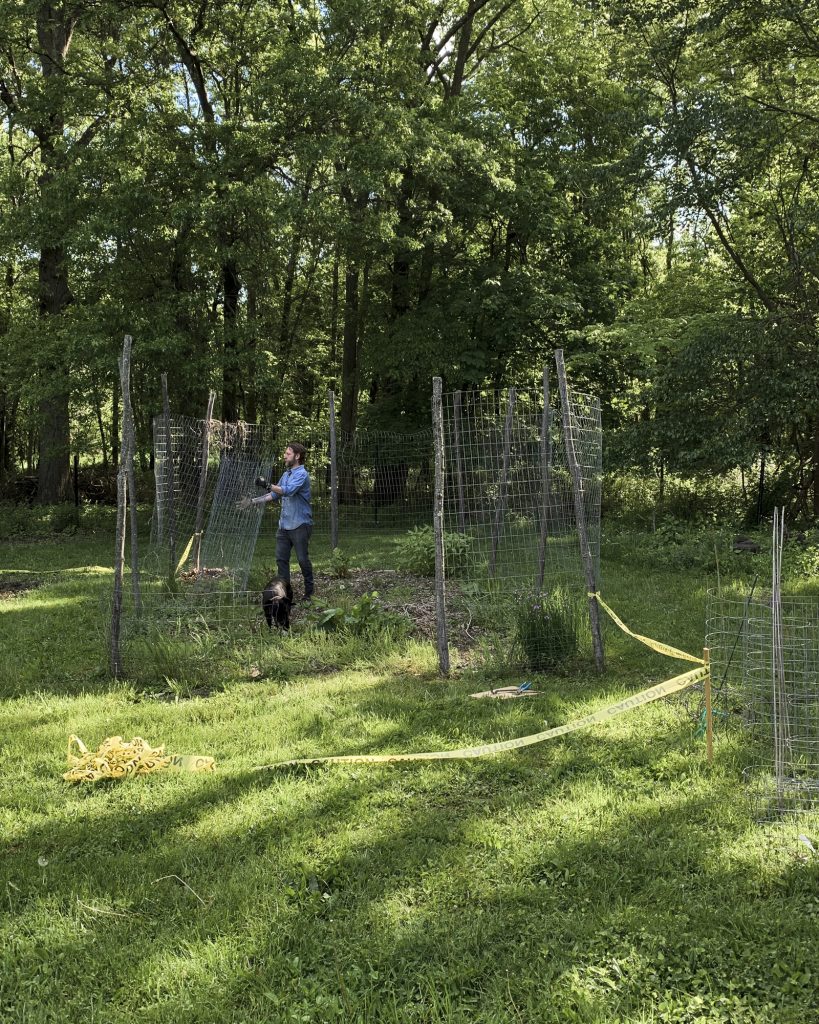
Year Two and Three
Year two, we learned all about soil. We have very clay soil, which is why almost nothing grew the first year. We started working in better soil and compost and the garden took off. Our plants were healthy and huge. What we didn’t realize was that when year three came around, we needed to re-add more good soil, because all the soil we added in the year before had compacted over the winter and we were almost back to the clay again. We did ok in year three, but not that great. However, I did know we were on to something good.
Year Four: Our Current Vegetable Garden Adventure
This brings us up to our current garden year and, well, I went a little crazy. I was super pumped up and overly confident after watching to many episodes of Monty Don’s shows and going to the Trade Secrets garden show in Connecticut. I wanted a larger garden, a larger plot of dirt to make things grow. Now that doesn’t sound too crazy, but then after watching Monty Don tour the potagers of Europe, I wanted a formal vegetable garden. This is when it all went down hill and has taken us on an adventure. Think about a symmetrical garden, with cross cut path, pea gravel through it and an ornamental piece in the center. Oh, and don’t forget the custom white picket fence that surrounds it, yup that’s the idea, oh boy!
We like to think of all of our spaces as rooms whether they are inside or outside. And frankly our outdoor rooms are few and far between. We are very grateful we were able to fence in the backyard last summer. This left us with one giant grass room with very little character. By adding in a formal vegetable garden, it adds structure we can build on. An anchor to create an experience around which will help define the rest of the space. Also, my allergies despise the grass, hardscaping is my friend.
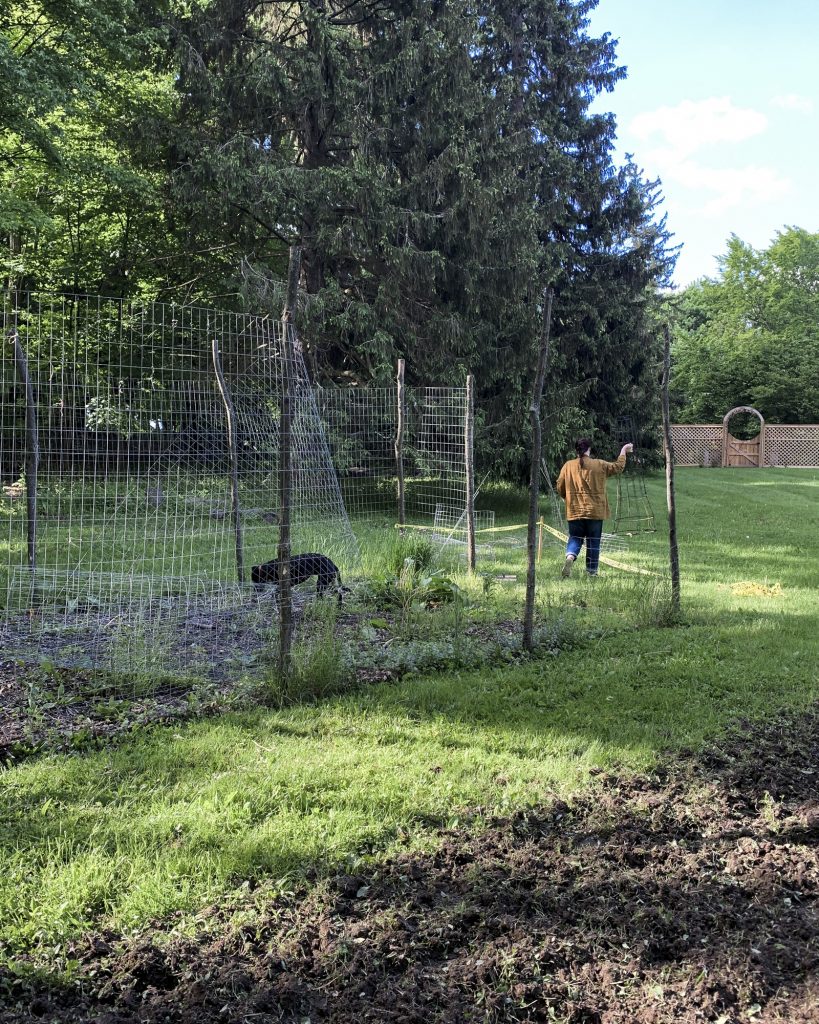
We Began Digging
We began digging and digging and digging. Luckily our neighbor loaned us his rototiller again. We expanded the garden to 32 ft X 36 ft. We had five cubic yards of compost delivered, to beef up the soil, but they couldn’t make it down to the garden. Susan brandished her biceps and we started shoveling the compost into wheelbarrows and took it to the garden. Like a million trips! Susan’s biceps were ripped after that day, I was just whipped. We used the rototiller to work in the new soil and we were off to the races.
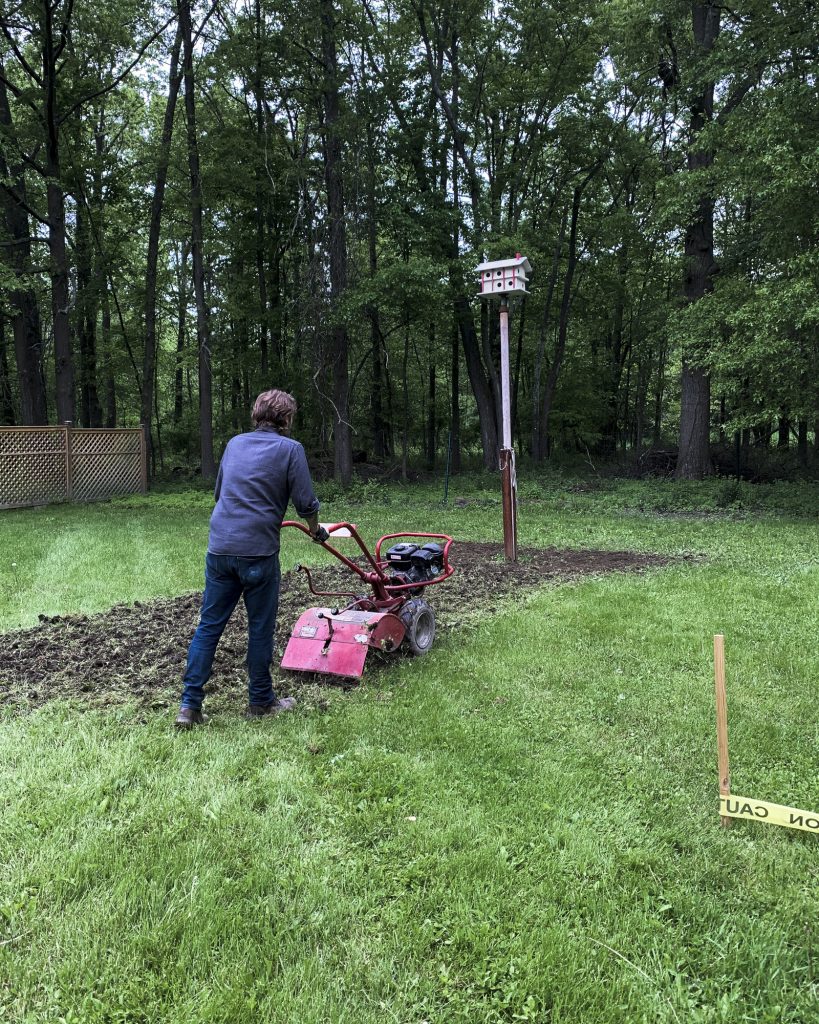
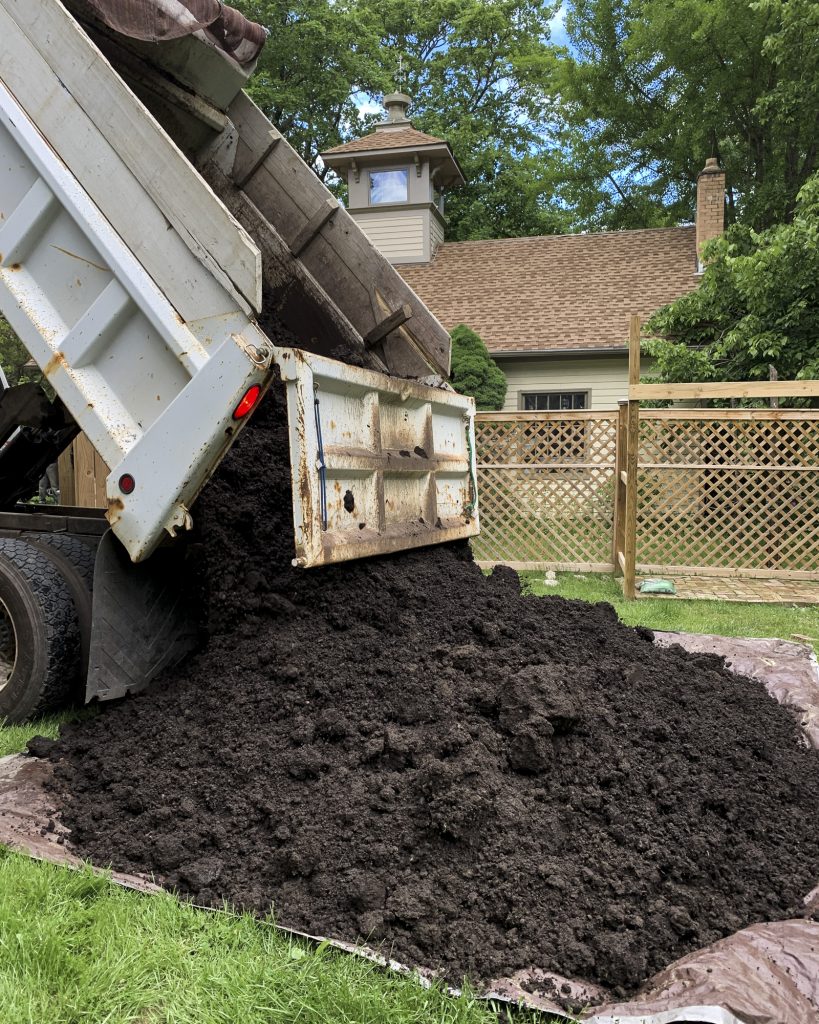
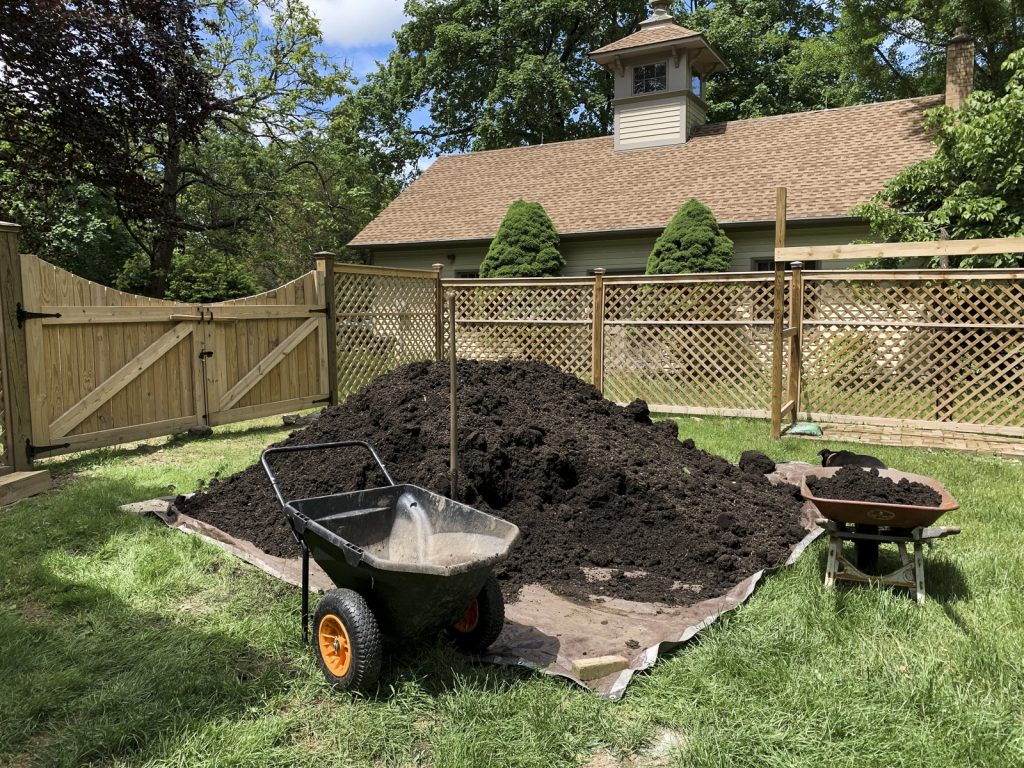
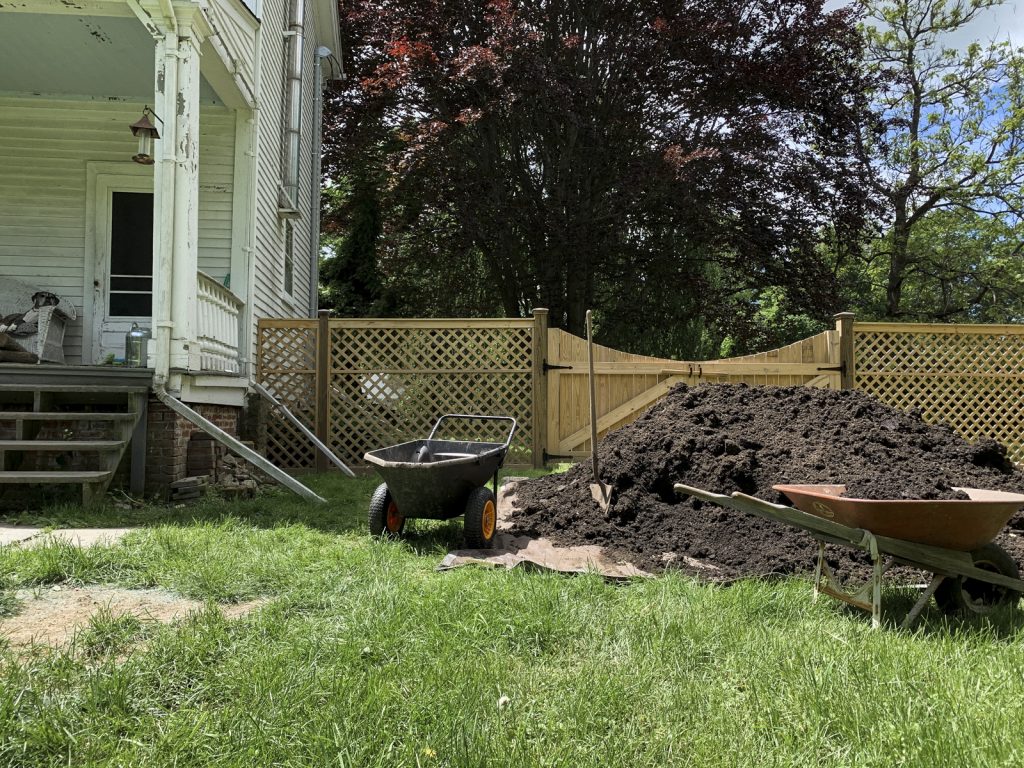
Our first priority at this point in the season was to get the seedlings in the ground. Even though the garden wasn’t fully layout, I couldn’t let our seedlings go to waste. And yes, we grew 90% of our garden from seed this year!!! I am so proud we didn’t kill them all. We ordered the seeds over the winter from a catalog company called Fedco, which is a seed co-op. Our neighbor Wayne calls it winter armchair gardening. It was my first time buying from one of these catalogs and it was so much fun and much less expensive. Every plant had a story about how it had bred in the past and what it should look like.
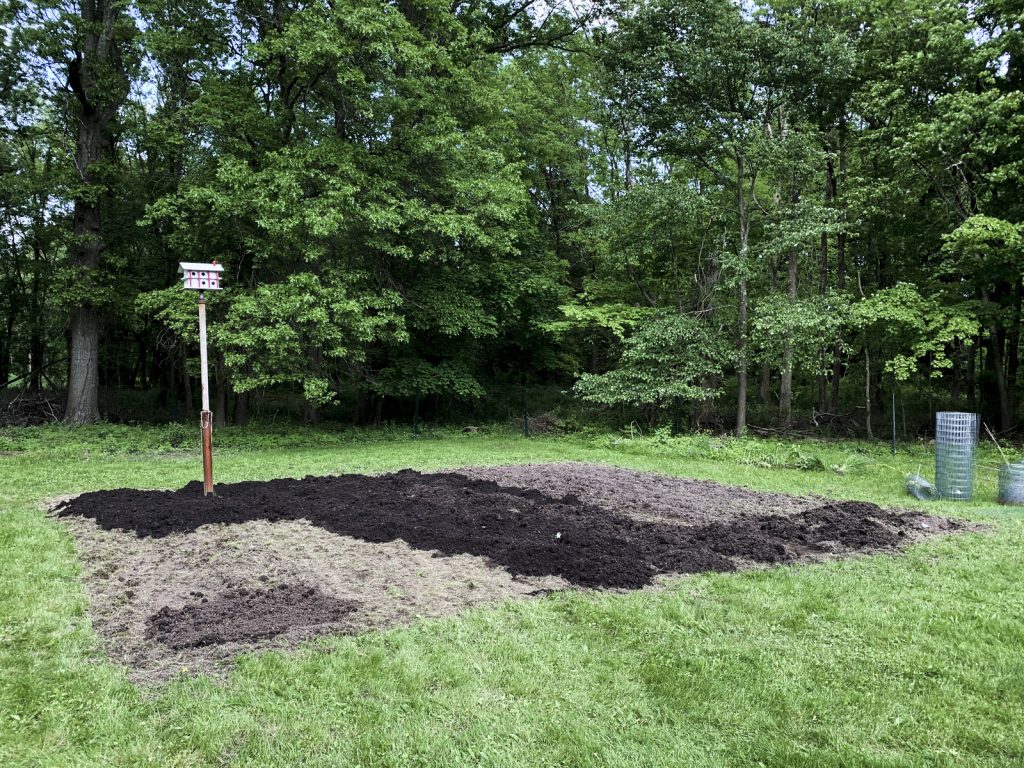
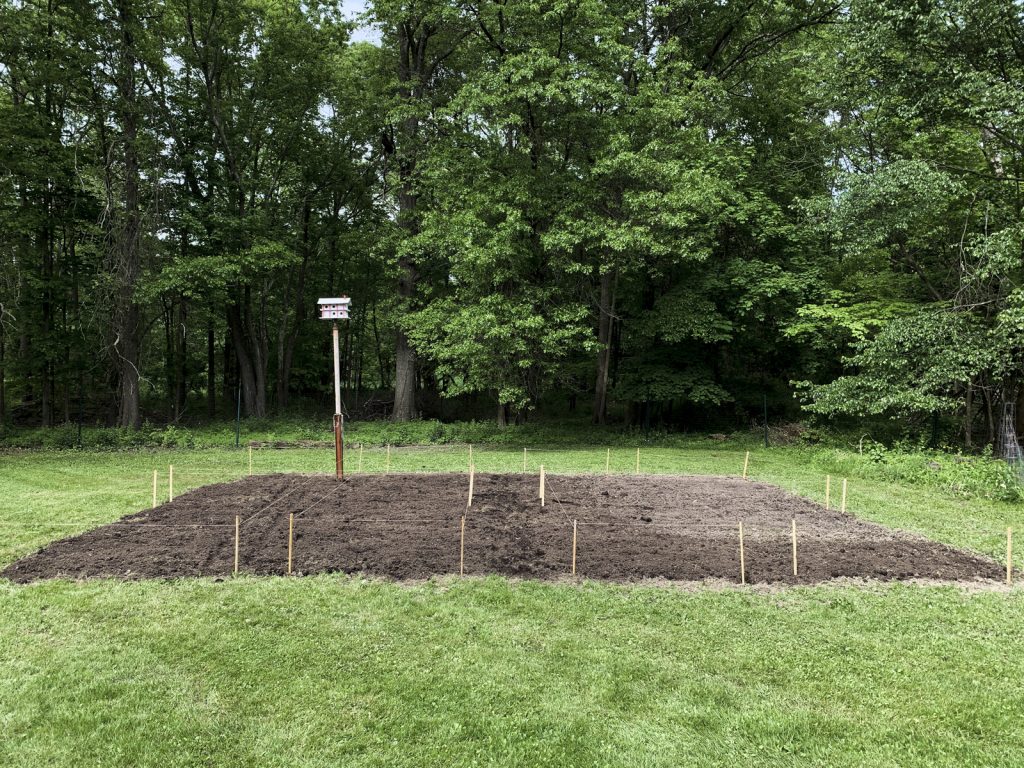
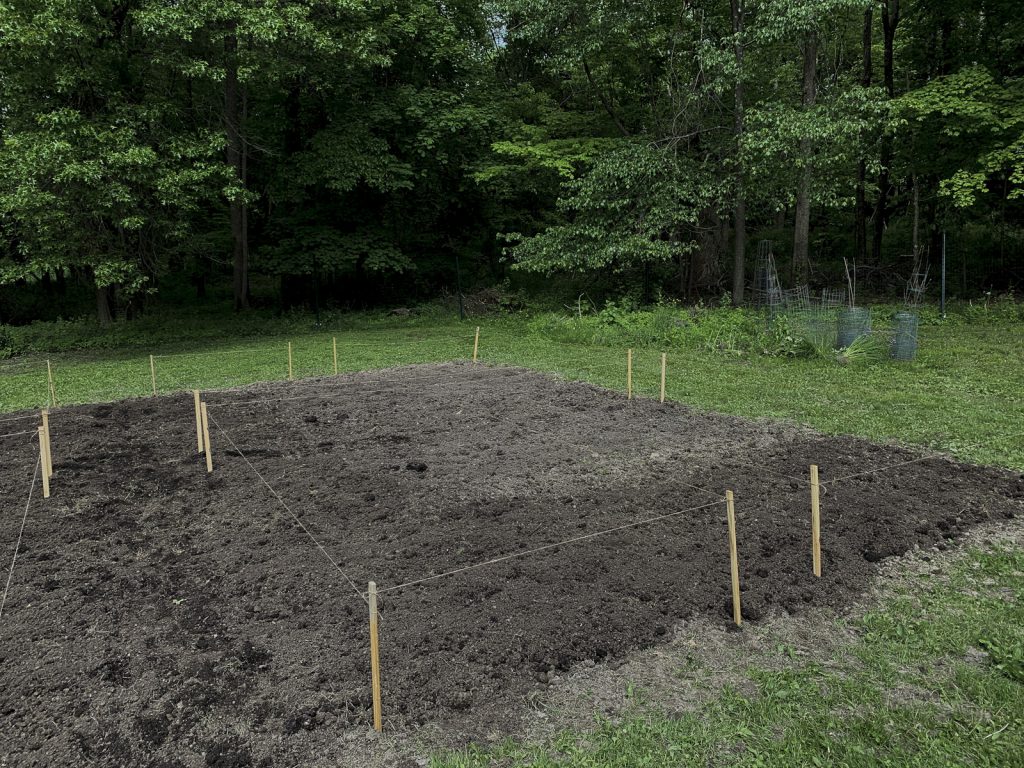
After we planted all our seedlings, we started to layout where the fence posts would go. While laying this out we soon realized that we had uneven measurements between each post. The panel system we used on our larger fence, we built the year before, was so much easier because the panels were all uniform (8 ft), so we knew we should try to mock it. This resulted in expanding to a slightly larger perimeter than we started with, so we could have 8 ft panels to work with.
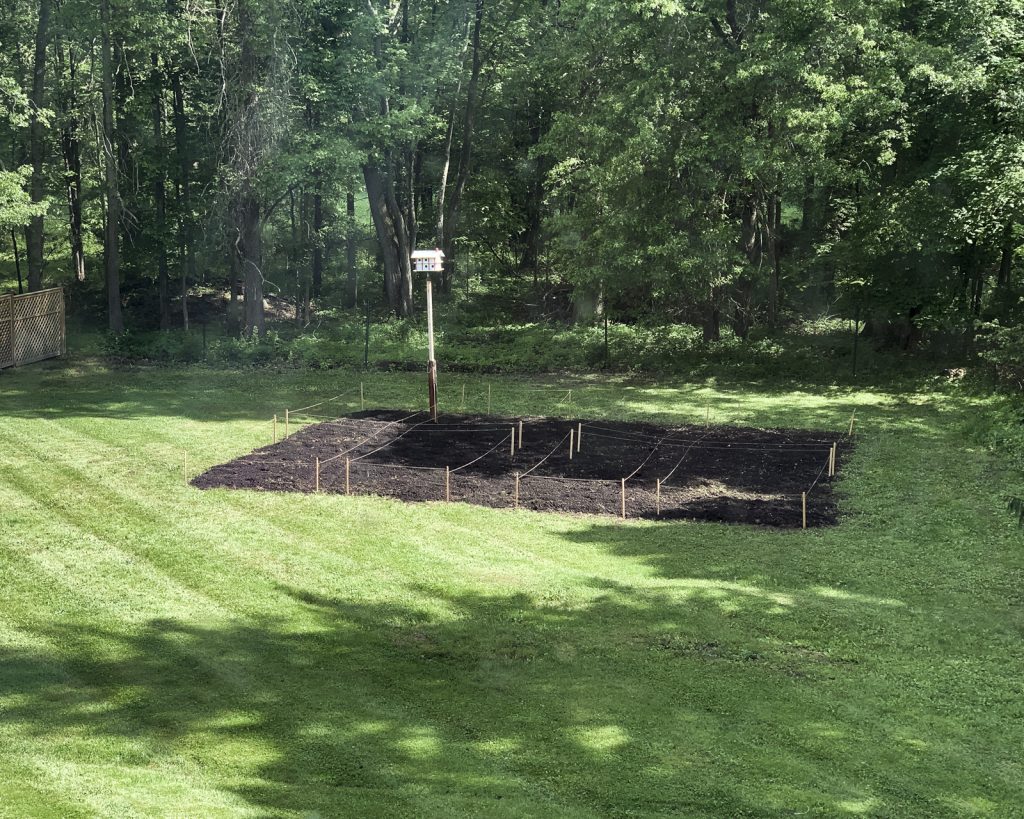
We dug out the holes for the fence posts with an auger and hand post hole digger. The auger makes digging the holes go so much faster. Also, we have a lot of small rocks in the ground and it helps knock them loose enough to get out with the hand post hole digger. We set each 4 X 4 post with quikrete 2 ft below the surface (make sure you go below your frost line) so it would dry fast and we could keep moving on. Next we added the rails that we would be tacking the pickets on to. They were 1 X 4 X 8 treated lumber and we toenailed them on the top and bottom with exterior screws into the 4 X 4 posts.
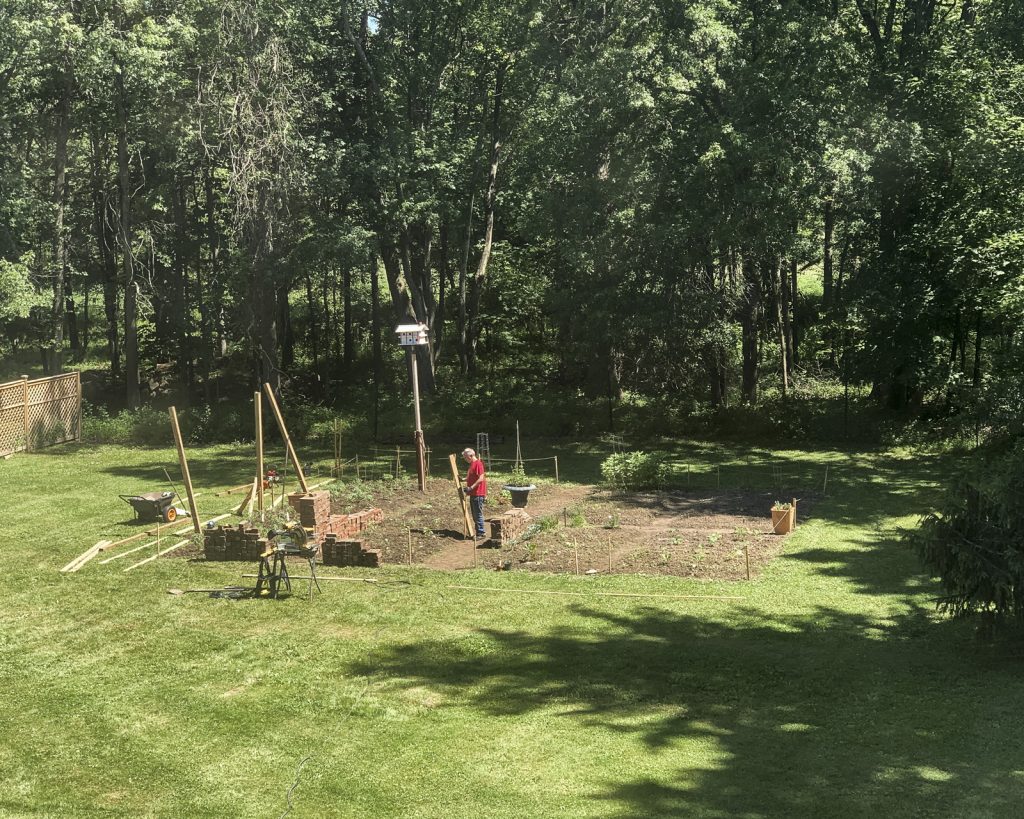
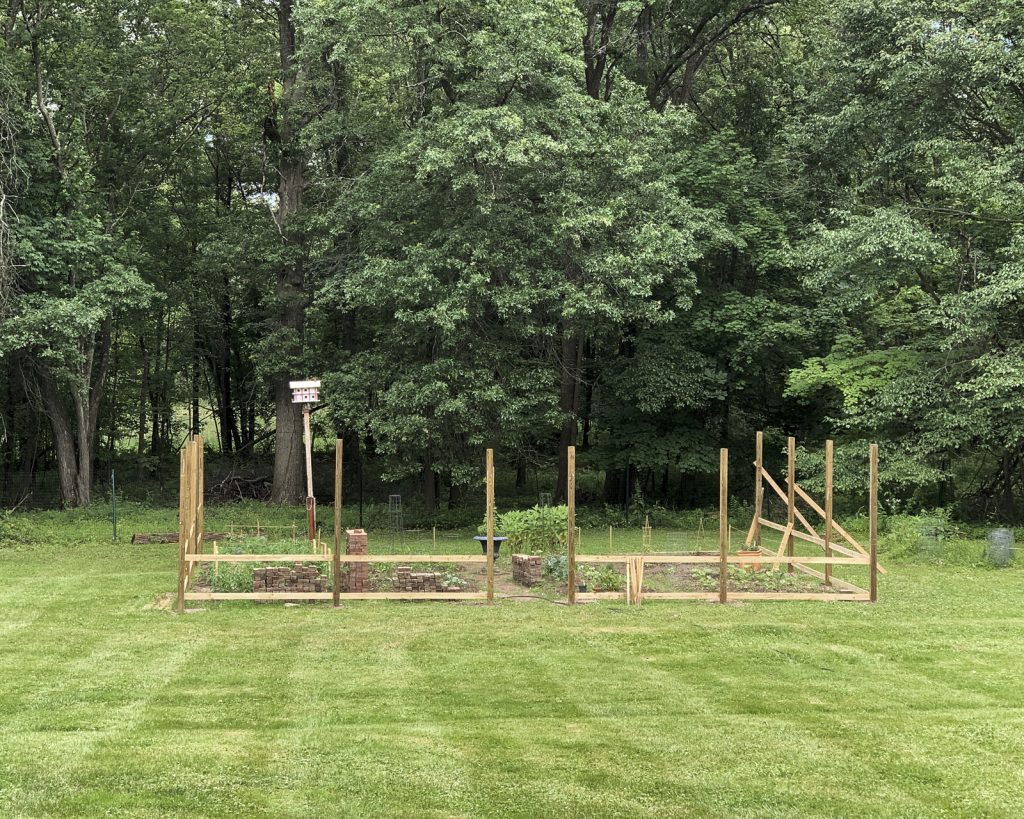
Setting Fence Posts
- Using an auger or hand post hole digger, dig at least 2 ft down, or past your frost line
- Set your post in the hole and brace two sides of the post with 2 X 4’s mounted at a 45 degree angle down 90 degrees from each other (looks like a tee pee)
- measure out to your next post and repeat step one and two
- Determine the height of your rails across from post to post (ours were 4 in from the bottom and 12 in from the top) and mark them on each post
- Cut your rails to fit the length between each post (ours were 8 ft)
- Pre drill each side of your rails at the top and bottom edge with a 45 degree angle (toenail)
- Using 2 1/2 in exterior screws, attach each rail to both posts
- Using a post hole level, level each post and adjust the 2 x 4 braces if needed
- Following the instruction on the Quikrete bag, fill the hole and set each post
- Post take 20-30 minutes to set
- While you are waiting for the posts to set you can move on to digging your next hole
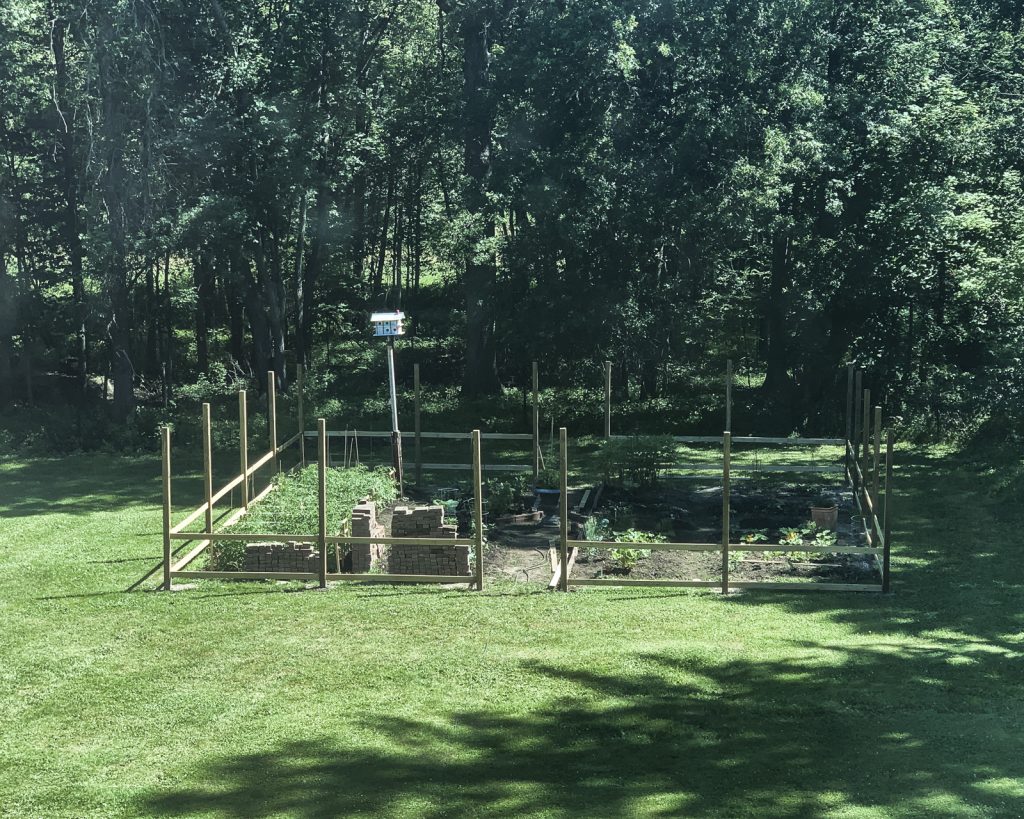
A Truck Load of Bricks
As we were finishing installing the fence posts and rails, a friend called and said she had a truckload of brick and do we want it? Well yes, who doesn’t love a truckload of old brick! At that time, we didn’t have a plan figured out for the edging of the paths through the garden and magically the brick appeared. Honestly, it was a really lucky break and we were so grateful of this gift. As a side note, we are constantly keeping an eye out on Craigslist and Facebook Marketplace for free or discounted supplies, and we encourage you to do the same. We have found some amazing deals.
Since this new found delivery of bricks showed up, we decided to set the paths before tackling the pickets. We researched all different kinds of edging patterns and agreed on the slanted angle version that we found in the book, Projects for Small Gardens (misleading title). We chose the design because of two reasons, one: because it looks attractive and two: because it would help us when we got to the radius in the center of the vegetable garden.
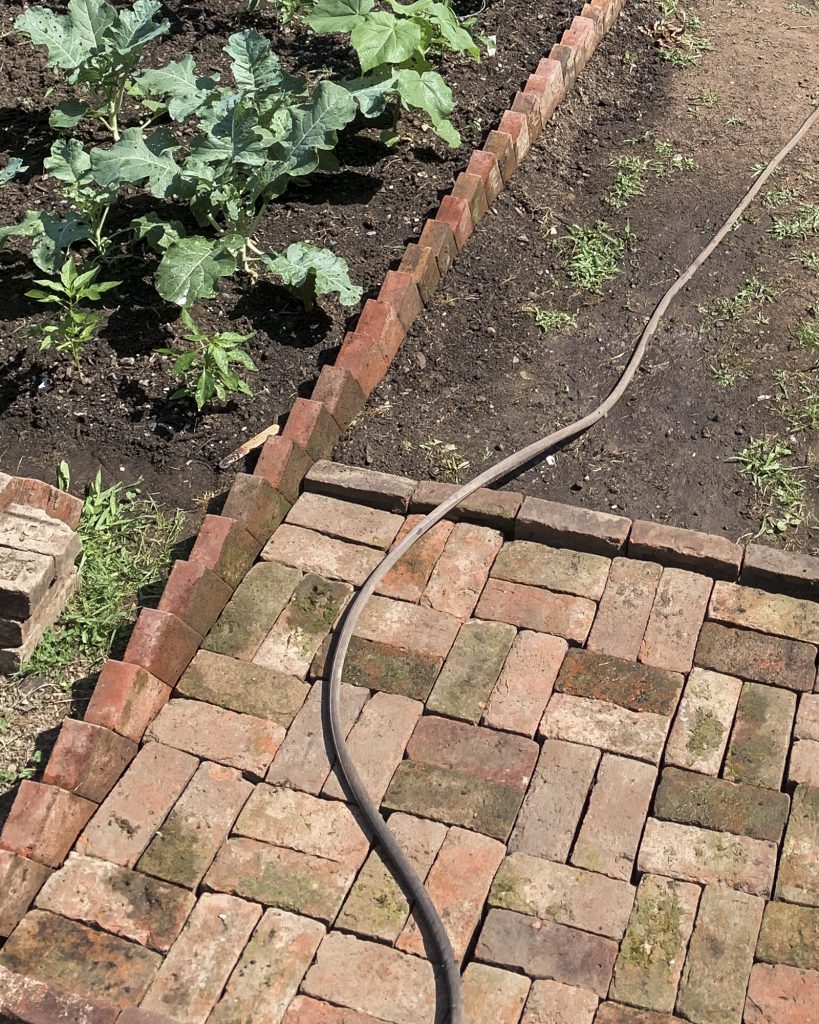
First measured out our paths and pulled strings on both sides. The strings would let us know where to dig the trenches for the brick and help us stay in a straight line. Where the paths crossed in the center we made a radius outline on the ground. We dug a trench a few inches below the surface and installed the brick at 45 degree angle, leaning the first brick against the first post. The next brick followed suit by leaning at a 45 degree angle against the first brick, trying to make sure the height is the same. We used a rubber mallet to smack the brick down into place, and then back filled the dirt on both sides, after we had put in about 5-6 bricks. This helps hold them into place as you continue.
Here is a bit of a timeline to see how the project has unfolded.
April
- Design sketches and a lot of Monty Don shows for inspiration
- Removed the old garden fence
- Cleaned out the old vegetable garden plot
May
- Determined the size of the new vegetable garden
- Marked out the size of the new vegetable garden with stakes and strings
- Rototilled the grass up
- Added five cubic yards of compost to the garden and tilled it in
- Marked out the paths with stakes and strings
- May 20th (after our last frost) we planted all our vegetables
June
- Set the fence posts and braces over three weeks (working around the rain)
- Installed brick edging
July
- Installed brick aprons
- Primed the posts and braces (one coat oil based primer)
- Painted the posts and braces (two coats Latex)
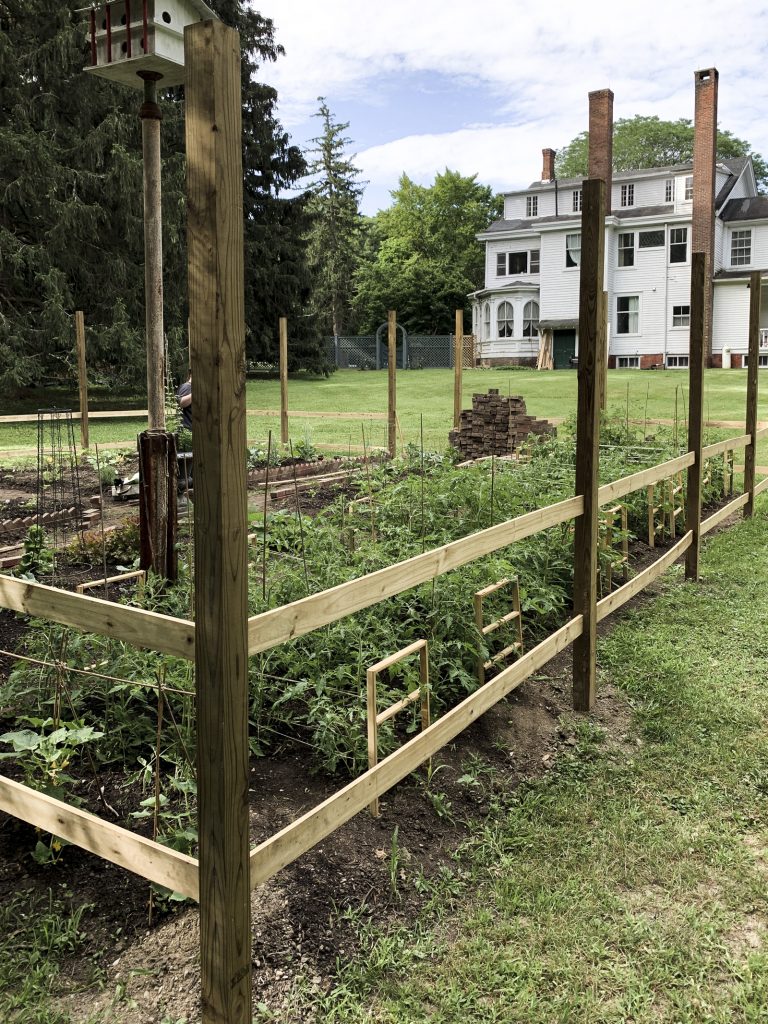
In the next post, I’ll tell you how we made the pickets for the fence and assembled it all together. The addition of brick aprons and… the pea gravel and the rest of the finishing touches.
Our to do list is not quite finished yet. We still have to make our custom cut pickets for the fence, make fence post caps, build two gates, add a brick apron to each entrance to the garden and top off the paths with pea gravel. We’re getting so close to completing our summer project.
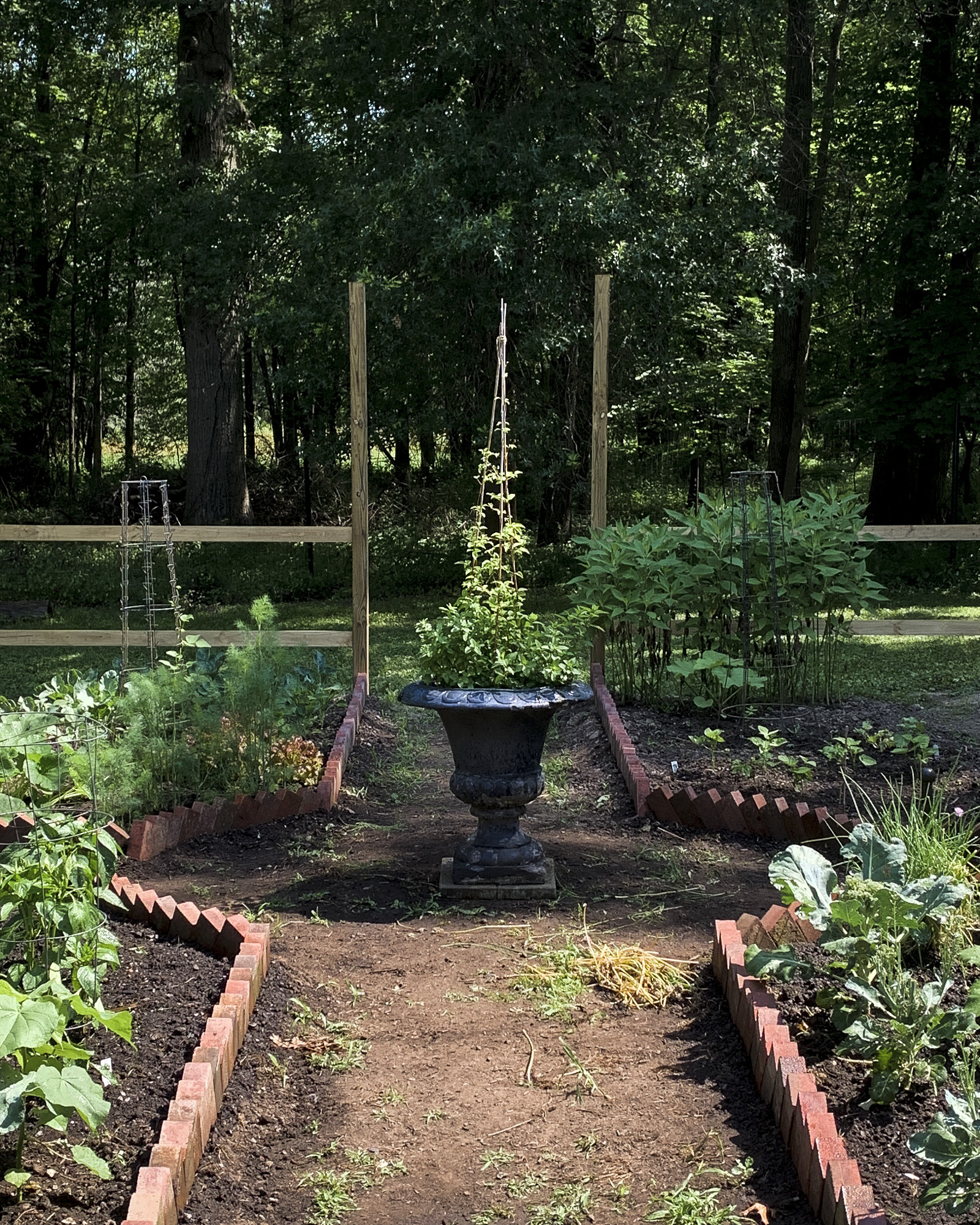


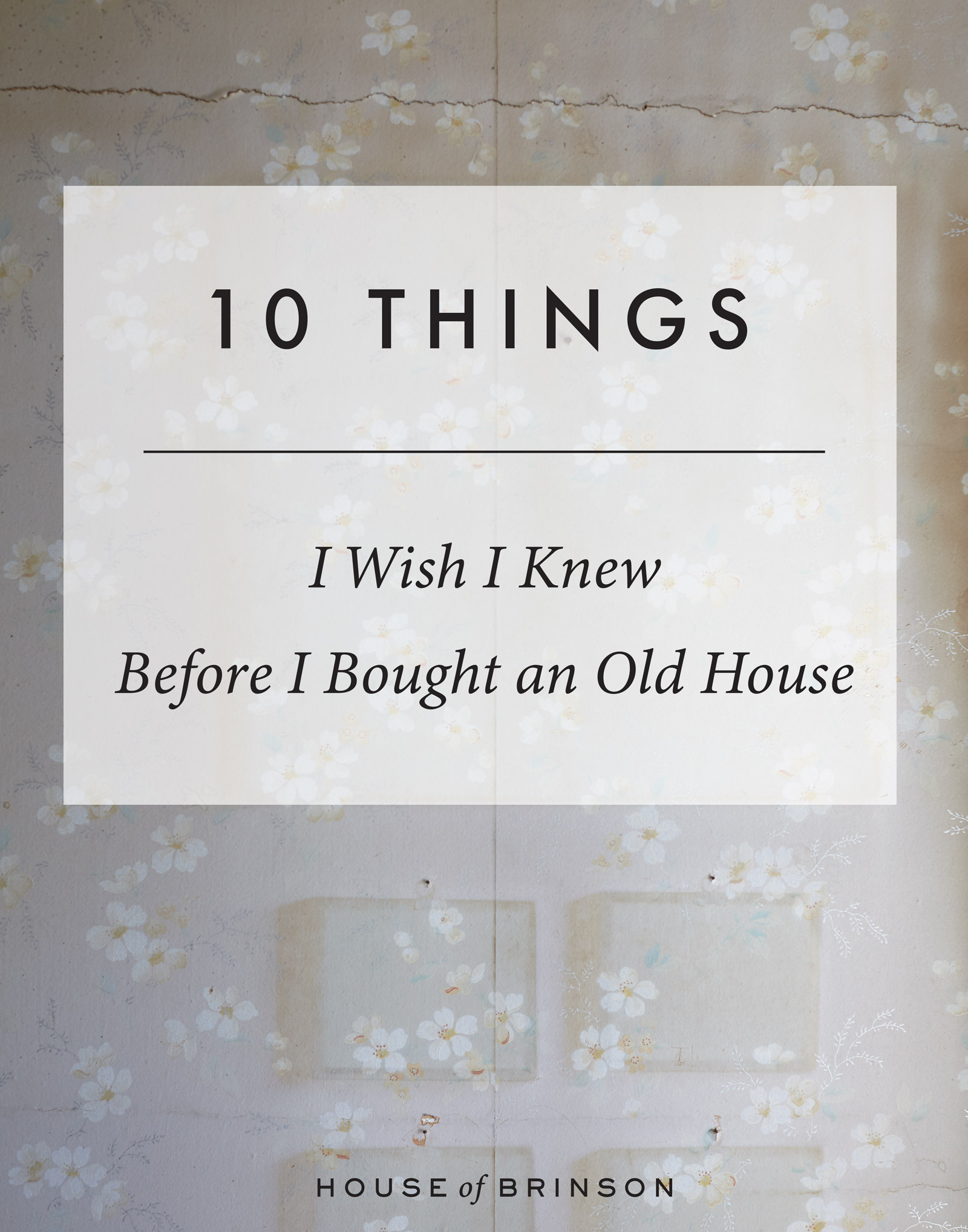
As usually amazing work! I can’t wait to see the next chapter. It will be so nice to eat your own growned veggies! I would love to create a formal vegetable garden at our yard, but sadly it isn’t that flat as your ground.
Love your garden! We’re in the middle of a drought here in Australia so I’m very envious if your beautiful greenery. One tip I can offer is to keep sweet potatoes away from everything else – they take over very fast and you’ll soon have nothing else. I’ve just found your blog but I’ll definitely be reading more 🙂
Wow I love it!! The advantages of having a garden in your backyard are you have a fresh environment and you don’t need to go outside to buy basic goods like potatoes and etc.. Having your own garden on these time of global pandemic is very helpful. You don’t need to go outside and buy for it. Because it’s already at your backyard. I feel so jealous when I see it huhu. I wish I’ve done making my own garden before. 🙁
Hi,
I love gardening. I am really patient in vegetable gardening. Recently I published a gardening name gardenhubs.com. Your blog helps me a lot with my blog idea.
Thankfully. GardenHubs
Seriously I love your garden and the way you write the blog post. While reading all the stuff, it feels like I am in fresh air and can feel the garden. You have make the article so easy to read and it’s easy to understand. Keep sharing good work.
I’m also planning to do this. This covid-19 makes me think of it too because having this green garden makes you smell fresh air without going outside at your home. Thank you very much for sharing this.